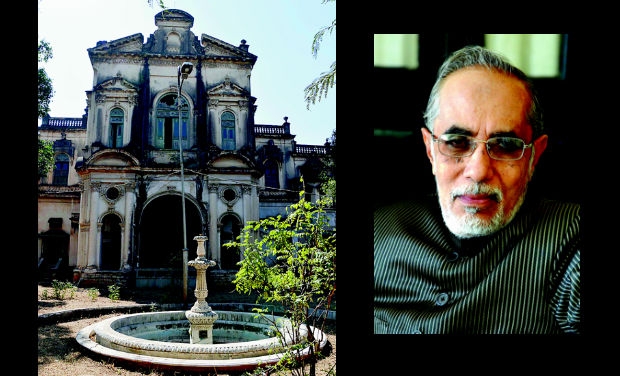Nazri Bagh is the palace that has seen history unfold in Hyderabad. It’s the palace of the king — the Nizam VII, Mir Osman Ali Khan. It was the seat of power and the development of modern Hyderabad is linked to the decisions taken in this palace.
The Nizam VII was born on April 6, 1886 at Purani Haveli and spent his childhood there. Subsequently, he shifted to Eden Garden. Facing Eden Garden was a great deodi or palace known as Kamal Khan Ki deodi. It is said that Nawab Kamal Khan invited Nizam VII to his deodi to attend a function. Nizam VII saw the Kamal Khan Ki Deodi and liked it. Maharaja Kishen Prasad tried to persuade Nizam VI to purchase that deodi for his sixteen year old heir-apparent, but failed.
Subsequently, the Maharaja successfully persuaded the Nizam VI to purchase it. When Nizam VI sent word to Kamal Khan to sell it to Nizam VI, it is said that he gifted the Deodi, which is now known as King Kothi.
When Nizam VII was staying at Osman Mansion, King Kothi was used as a banquet hall. At that point in time, it is said that two sisters in white sarees called on the Nizam VII and presented a piece of land measuring five acres. In other words this presentation is also called the oblation. Nizam VII accepted it and the two ladies left India for Damascus. On this piece of land, a new palace was constructed between 1907-1909 and the Nizam VII shifted to that palace which is popularly called as Nazri Bagh.
It was the centre of all activities till 1948. The Nizam ruled the state from this historical palace. Nazri Bagh is one among the many monuments protected by the efforts of Princess Esra Jah.
The administrator of Nizam’s Private Estate, Dr Ameenuddin Khan, a well known HR consultant, is looking after this palace now. The Nizam used to enter the palace, which has six steps presumably in the memory of six Nizams, and sit everyday on the sixth step and rub the step. The step has changed its shape and looks like a polished stone because of the rubbing daily for almost six decades by the Nizam.
On the left side of the sixth step, he used to write on a pillar which was a black board for him. He used to write orders, poems etc. on the pillar. The pillar has been protected. A telephone used to be kept on the pedestal, which had a number 001.
There is another verandah which was used by the Nizam daily at 4 pm to have his evening tea there.
The writer is an author, researcher, advocate and secretary of the Mukarram Jah Trust
source: http://www.DeccanChronicle.com / Home> News> Lifestyle> Travel / DC, by Mir Kamaluddin Ali Khan / Januaryn20th, 2013

Dear Sir,
Could you provide me the telephone number of “MIR KAMLUDDIN ALI KHAN MUKARRAM JAH EDUCATIONAL TRUST”, Hyderabad.
Kindly reply on my e-mail: simonpaul2000@hotmail.com
With thanks & kind regards,
Simon Paul. C.D.